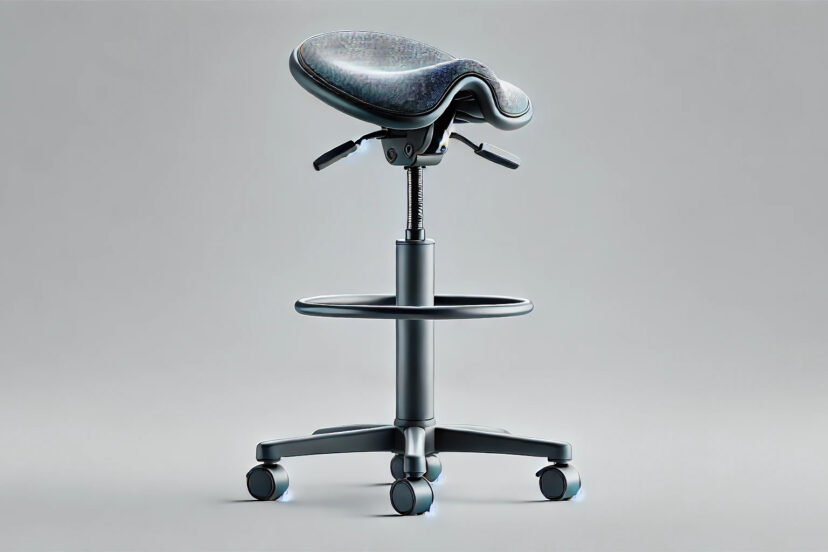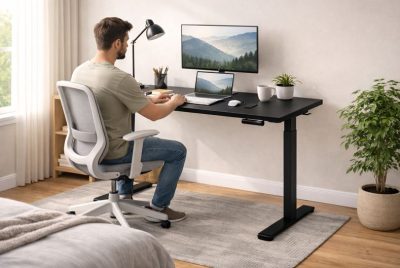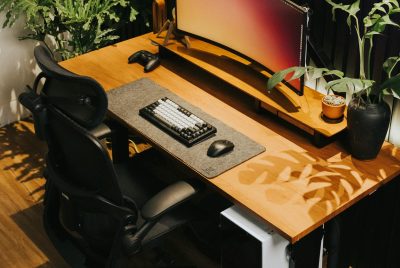Ergonomic Stool: A Perfect Balance Between Comfort and Support
We may earn a commission for purchases made using our links. Please see our disclosure to learn more.
Hours passed while you were sitting at your desk and then suddenly you felt a sharp, dull pain on your shoulders and back. You find yourself constantly cracking your neck and hunching forward just to find relief. Sounds like an everyday scenario? Well, what if I told you that an ergonomic stool (no, not that stiff, backless bar tool you’re imagining), as simple as it may look, can definitely make your day a little better? Ready to explore how they can help ease the pain you’re feeling? Let’s go!
What is an Ergonomic Stool?
An ergonomic stool is a simple chair that allows you to rest (somewhere between a sitting and standing position) and move freely. It’s designed to help relieve pressure from joints and muscles (which are often the culprit behind discomfort). Most stools don’t have a backrest but it doesn’t mean they’re uncomfortable at all. Reminds me of the time I first tried an ergonomic stool, I really thought “Are you sure this won’t hurt my back? Cause there’s nothing to lean on”. Guess what, don’t judge the book by its cover. I mean, we often prefer a seat with a backrest, right? But those that don’t have one can still provide comfort. Plus, these stools encourage active sitting (which means no slouching) and will force you to sit properly. You will feel more alive throughout the day!
Research has shown that ergonomic stools can significantly improve posture and alleviate back pain by promoting an active sitting posture. A study on dynamic stools found that they helped maintain spinal alignment closer to the natural standing position, which is vital for reducing strain on the lower back muscles. This form of seating encourages subtle movements, engaging core muscles, and preventing slouching, which are essential for long-term back health. For a deeper dive into this topic, you can explore a comprehensive review of the impact of sitting postures on health in this ScienceDirect article.
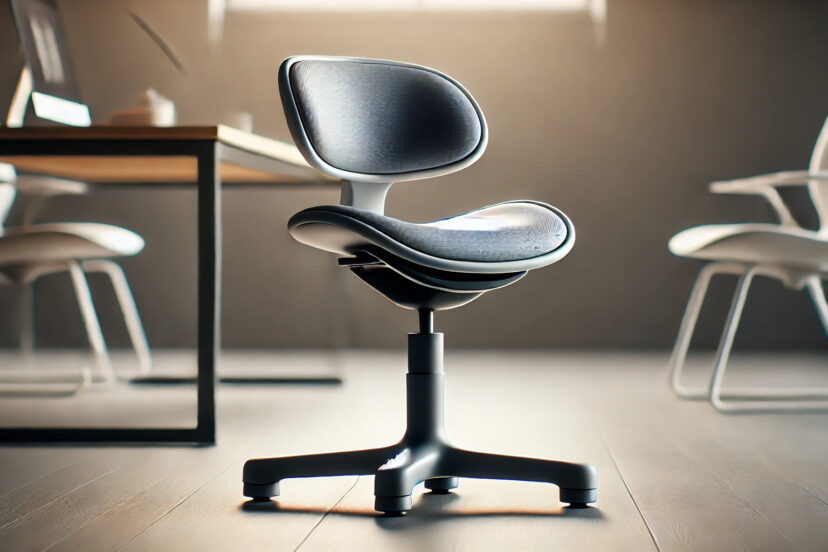
Types of Ergonomic Stools
Not all ergonomic stools are created equal. They come in different designs, each catering to various needs. So, which one’s right for you? Let’s break it down.
1. Saddle Stools
From the name itself, Saddle stools look like a saddle. Why make it look like that? So you can get closer to your work without overstretching (which causes strain muscle strains). It actually feels like you’re riding a horse but this stool helps maintain spinal alignment. So, who should use these? Dentists or artists. Because they need to move freely and be more flexible.
2. Balance Stools
Balance stools are super cool and fun. It’s like working and playing at the same time. Well, just don’t overdo it! With their rounded base, they let you lean, sway, and move. These wobble chairs can keep you active and balance the day away!
3. Sit-Stand Stools
Are you a member of the standing desk crowd? Yes? Then this is the perfect stool for you. Sit-stand stools are designed to let you perch or lean while you work, so you can easily shift between sitting and standing. I highly recommend this for collaborative work and if you can’t picture yourself being glued to your chair all day.
4. Kneeling Stools
Kneeling stools are a smart choice for the office desk warriors out there! Yeah, it may look unconventional, but hey, they offer fantastic lower back support! How? By shifting some of your weight onto your shins. Basically, it helps you sit more upright without even realizing it.
Benefits of Using an Ergonomic Stool
1. Improved Posture
Using a poorly designed chair can lead to more slouching. And slouching is really bad for your spine and health in general. But with ergonomic stools, your spine will be aligned naturally without even realizing it. No more awkward, slumped-over positions that leave you aching by the end of the day.
2. Core Engagement
The backrests are super comfy. I mean, there’s no denying it! But when you’re too comfortable, you tend to forget how to sit upright. So, without a backrest to rely on, you’ll be forced to sit in an active position, where your core muscles get a mini workout throughout the day.
3. Lesser Back Pain
A bad, poorly designed chair can harm your back. Believe me!!! Ergonomic stools (especially saddle and kneeling stools) help distribute your weight evenly, taking the pressure off your lower back. If back pain is a familiar enemy, this could be the relief you’ve been looking for.
4. Freedom of Movement
Now who wants to move as free as a bird? Just kidding. Ergonomic stools (unlike your favorite chunky office chair that’s too hard to control) are lightweight. Meaning, you can move around your workstation without sweat.
5. Increased Energy and Focus
It’s hard to stay energized when you’re slouched over and half-asleep in a chair, right? Ergonomic stools won’t let you fall asleep. As in literally! That’s just impossible without a backrest, c’mon! So since you’re in an an active sitting posture, you will be more alert and focused.
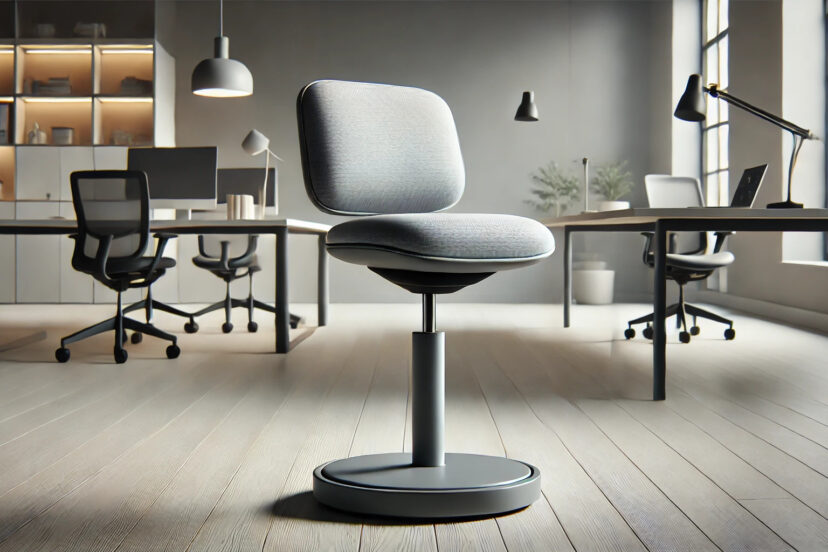
How to Choose the Right Ergonomic Stool for You
With so many options, how do you pick the one that’s right for you? It’s simpler than you think. Here are a few questions to guide you:
1. What’s Your Primary Use?
Are you using the stool for a standing desk, art studio, or general office work? If you’re standing a lot, a sit-stand stool might be the best fit. Need to alternate between sitting and moving? A balanced stool could be your go-to.
2. What’s Your Comfort Level?
Comfort is key here. Make sure the stool has enough padding and the right shape to fit your body. If you’re tall or have long legs, look for an adjustable height feature.
3. Do You Need Mobility?
Can’t stay sitting on a chair for a few hours? If you move around a lot in your workspace (just as I do), opt for a stool with wheels or a swivel feature. It’ll keep you flexible and on the go without the hassle of constantly standing up.
4. How Much Support Do You Need?
If you still want some extra back support, choose an ergonomic stool that has a backrest. While many are backless to engage your core, a little extra structure can go a long way for some.
Top Ergonomic Stools for Comfort and Productivity
1. SONGMICS Standing Desk Chair – Ideal for standing desk users who want an active sitting posture.
2. Varier Move Tilting Saddle Stool – Versatile and designed for dynamic sitting, this saddle stool promotes healthy posture.
3. HÅG Capisco Puls Ergonomic Saddle Stool – Perfect for professionals who need flexibility and upright sitting.
4. Learniture Balance Stool – Affordable and great for core engagement, it’s a popular choice for home office workers.
5. KKTONER Rolling Saddle Stool – A budget-friendly option with lumbar support and adjustable height.
Ergonomic Stool vs. Office Chair: Which One is Better?
Honestly, it’s not even a question. You should know which one suits your needs. Want more back support for long hours of work? Go for an office chair. Want to stay active while working? Go for an ergonomic stool. If back pain or fatigue is a concern, an ergonomic stool could be the game-changer you need. Hey, if you want, just have both of them and switch anytime you want!
Tips for Using an Ergonomic Stool Effectively
1. Adjust the Height – Your stool should be at a height where your feet rest flat on the ground or on a footrest.
2. Engage Your Core – Don’t slouch! Keep your core muscles slightly engaged to maintain posture.
3. Take Breaks – Even with an ergonomic stool, it’s important to stand up and move around regularly.
4. Use a Footrest if Necessary – If your feet don’t reach the floor naturally, use a footrest to maintain a good sitting position.
Check this out:
Who Should Use an Ergonomic Stool?
Ergonomic stools are great for:
– Office workers who want to improve posture and reduce back pain
– Artists, designers, or health professionals who need flexible movement
– Anyone with a standing desk looking to switch between sitting and standing
– Gamers and home office workers seeking a more active sitting option
Conclusion
An ergonomic stool is a comfortable chair that lets you stay active and move freely while working. It’s perfect for those people complaining of back, neck, or shoulder pain because of muscle strain and poor posture. Switching to one can really transform your workday, improve your posture, and boost your energy. So, why don’t you try it yourself and experience a better, more active workday? Hey, before you go, read our guide on ergonomic pillows for more tips!
FAQs
1. Are ergonomic stools good for your back?
Yes! It encourages better posture, naturally supporting the spine and reducing lower back pressure. No more slouching!
2. Can I use an ergonomic stool all day?
Sure you can, but with balance! While these stools are great for active sitting, it’s still important to take breaks, stretch, and move around. Sitting in one position all day, no matter how ergonomic, can lead to stiffness.
3. How much do ergonomic stools cost?
It costs anywhere from $50 to upwards of $300, depending on the features, materials, and brand. Remember, always go for quality stools so it can last long.
4. What’s the difference between an ergonomic stool and an ergonomic chair?
An ergonomic stool focuses on active sitting and core engagement, often without a backrest, while ergonomic chairs are designed for long hours of sitting, providing full back support.
5. Do ergonomic stools work with standing desks?
You got that right! Many sit-stand stools are designed specifically for standing desks, allowing you to transition smoothly between sitting and standing while still supporting your posture.

